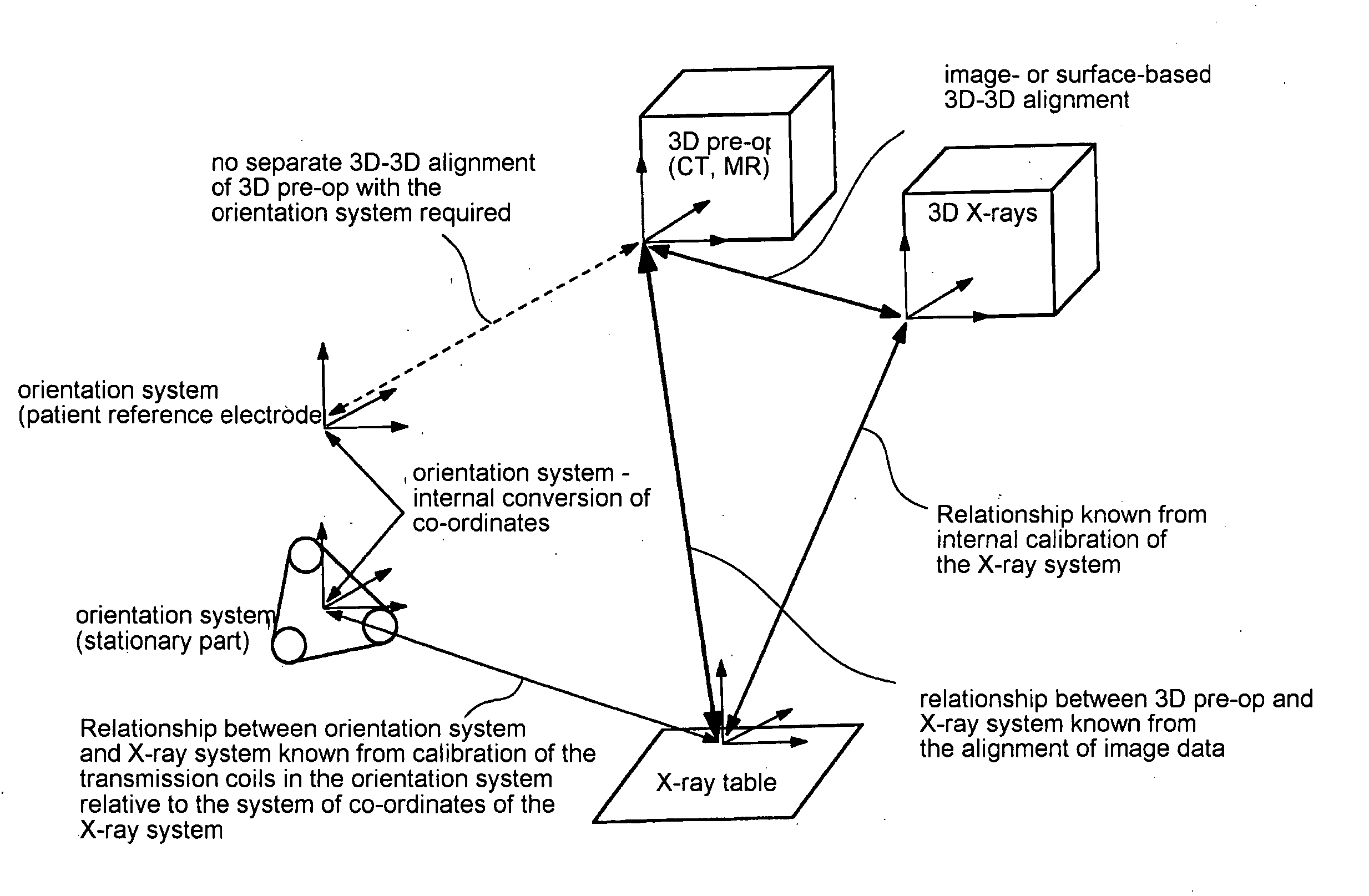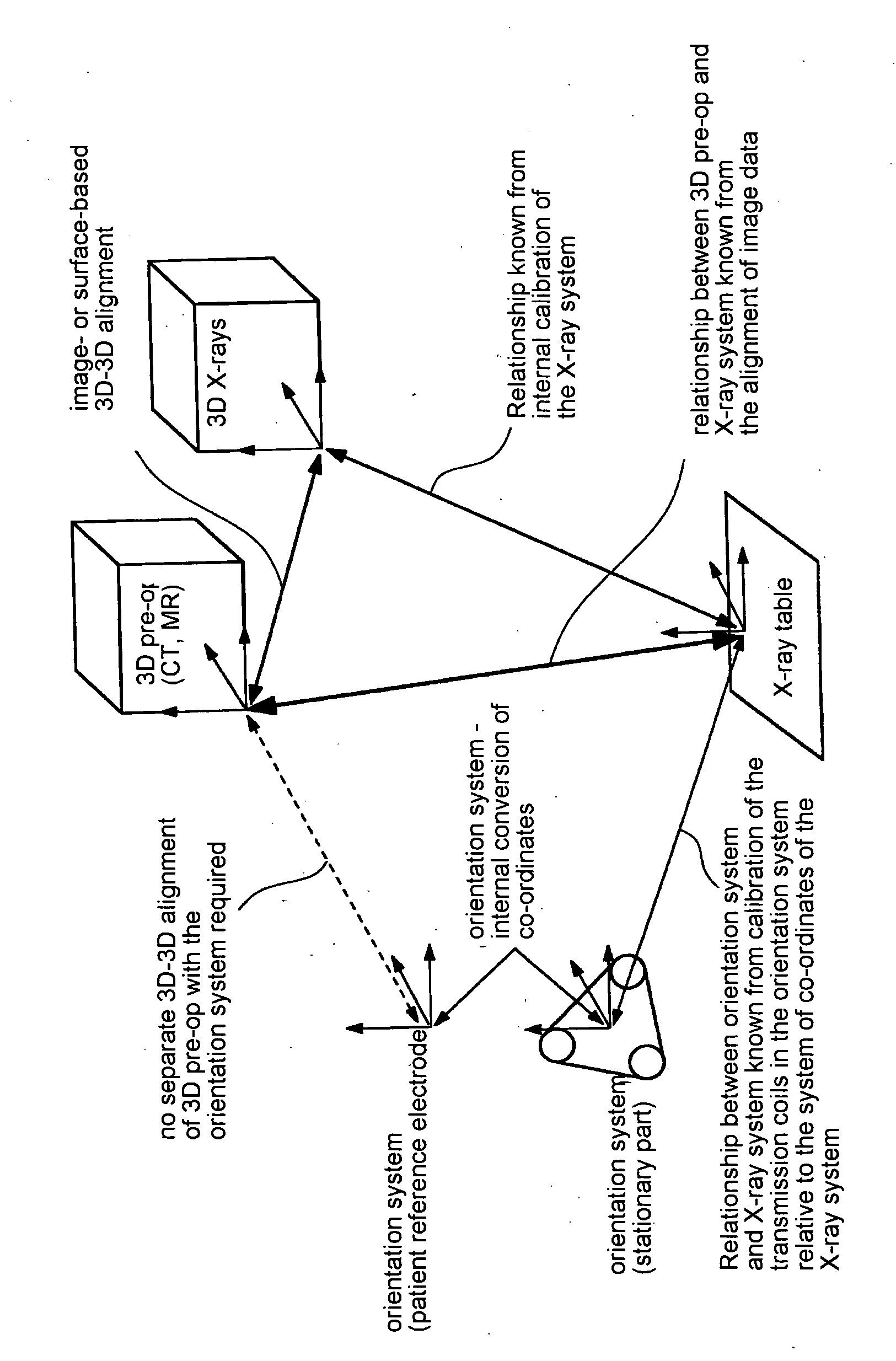Method for visually supporting an invasive examination or therapy of the heart with the aid of an invasive instrument
a technology of invasive examination and invasive therapy, which is applied in the field of visual support of invasive examination or heart therapy with the aid of an invasive instrument, can solve the problems of difficult ablation, time-consuming, and complex procedure for carrying out annular ablation
- Summary
- Abstract
- Description
- Claims
- Application Information
AI Technical Summary
Benefits of technology
Problems solved by technology
Method used
Image
Examples
Embodiment Construction
[0032] The figure shows three different systems for obtaining data to support a therapy of the heart, such as an ablation. Prior to the actual therapy, a three-dimensional image data set “3D pre-op” is acquired by means of computer tomography (CT) or magnetic resonance (MR). The system of co-ordinates is not at first correlated with other systems of co-ordinates. Furthermore, prior to or during therapy, a three-dimensional X-ray image data set of the heart is acquired using a technique as described in German patent application 10 2004 048209.8. The relationship between the system of co-ordinates of the three-dimensional X-ray image data set “3D X-rays” and an X-ray table on which the patient is lying, is known from the internal calibration within the X-ray system. The therapy of the heart ensues in particular with the aid of a catheter, for example an ablation catheter. An orientation system is available to pinpoint the position of the catheter. The orientation system comprises a st...
PUM
 Login to View More
Login to View More Abstract
Description
Claims
Application Information
 Login to View More
Login to View More - R&D
- Intellectual Property
- Life Sciences
- Materials
- Tech Scout
- Unparalleled Data Quality
- Higher Quality Content
- 60% Fewer Hallucinations
Browse by: Latest US Patents, China's latest patents, Technical Efficacy Thesaurus, Application Domain, Technology Topic, Popular Technical Reports.
© 2025 PatSnap. All rights reserved.Legal|Privacy policy|Modern Slavery Act Transparency Statement|Sitemap|About US| Contact US: help@patsnap.com


